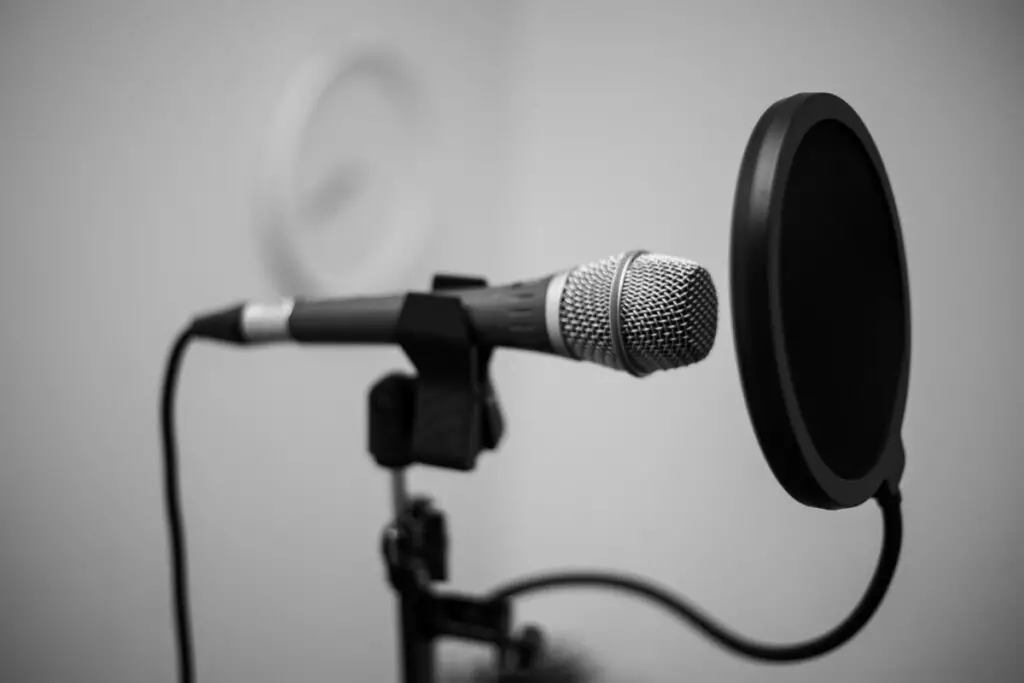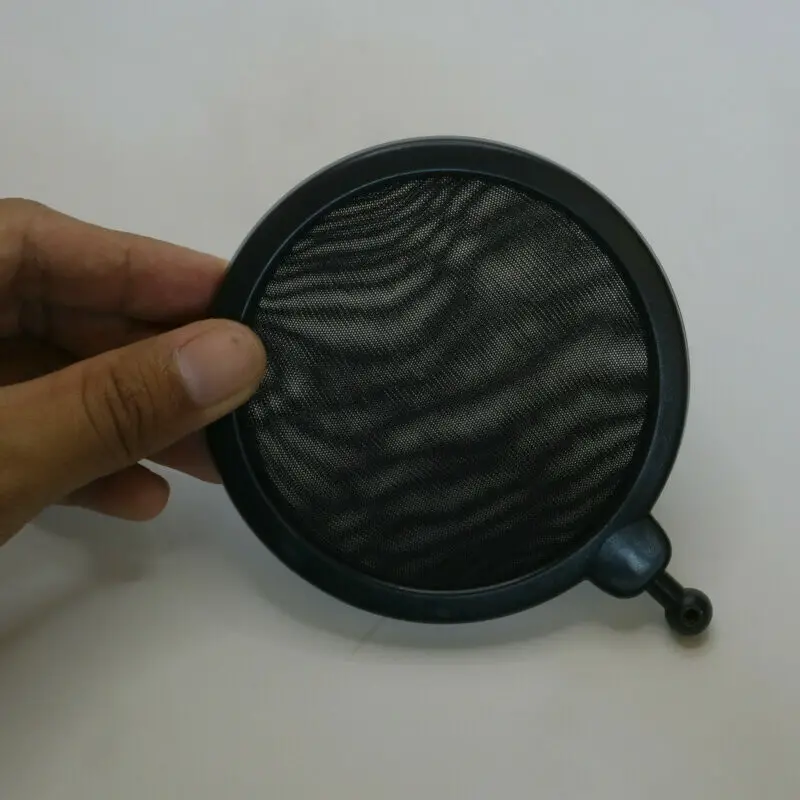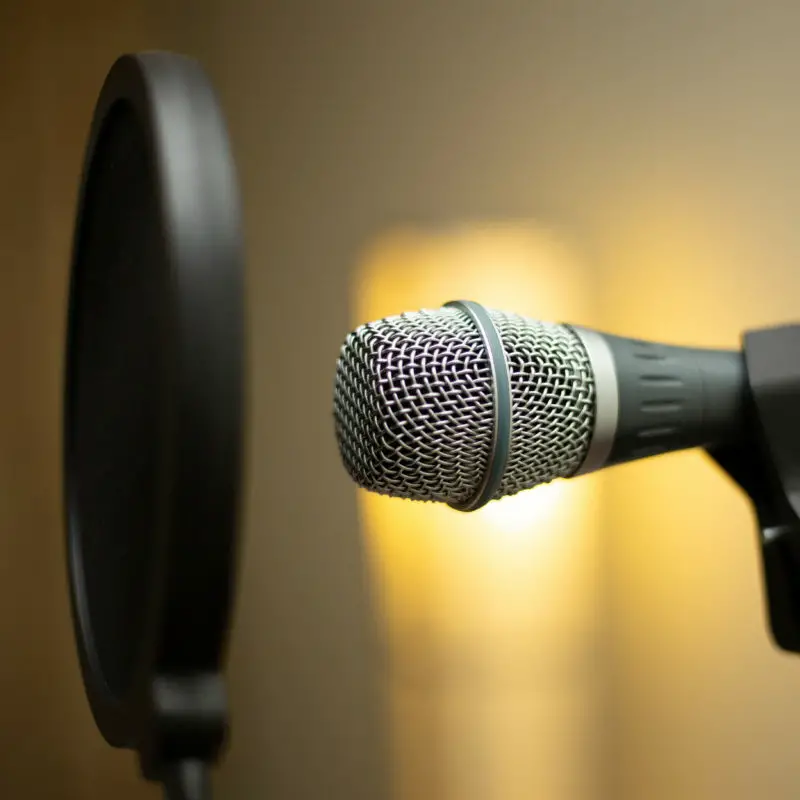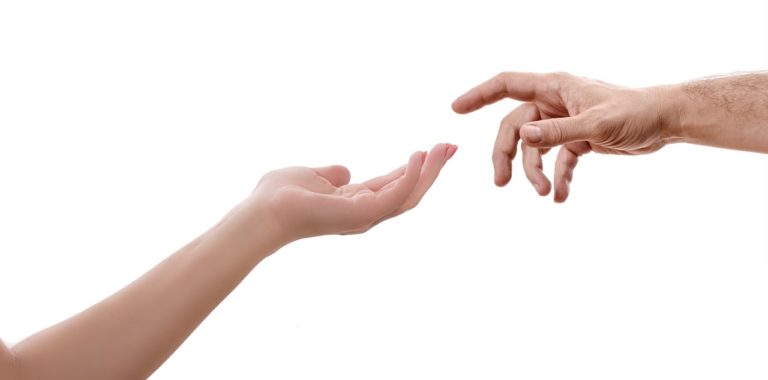What Does a Pop Filter Do? [And Other Pop Filter Tips]

If you want to improve your microphone without spending hundreds of dollars, a pop filter is a great way to do that. But, if you aren’t familiar with the tool, you might be asking the question: what does a pop filter do?
A pop filter is a screen between you and the mic that catches “puh” noises. Reducing this noise lets you relax when using “p” noises, letting you focus more on a better deliver. It helps you improve your sound quality.
Now that we know what a pop filter does, we will go over how a pop filter works, whether or not they make a difference, and the benefits of using one.
How Does a Pop Filter Work?
Pop filters use porous materials wrapped around a circular frame to help reduce popping sounds likely to occur while recording. They can help eliminate loud, distracting popping sounds using harsh consonants like P, B, T, D, K, and G.
A pop filter is also known as a pop shield or pop screen. It works as a noise protection filter for microphones. These filters are typically used in recording studios.
Pop filters can eliminate popping sounds or any background noise caused by the mechanical impact of fast-moving air on the microphone, which naturally happens when you speak into a microphone.
These filters also can reduce the effect of sibilance, the hissing sound made by air passing through someone’s teeth. This happens when saying certain consonants like S and Z.
How to Use a Pop Filter
Most pop filters include a mounting clamp to attach to your microphone stand. Adjust your mic stand and tighten it to the correct position. Then, simply attach the pop filter to the arm of your mic stand next to the microphone.
There’s usually an adjustable gooseneck that connects your pop filter to your mounting clamp, so make sure to adjust it until the pop filter rests a few inches from your microphone. Maintain a 2 to 6 inches distance between the microphone and the pop filter.
When using the pop filter, keep it directly between the microphone and your mouth. Depending on the sound you want and your microphone, stand 3 to 10 inches away from the filter. So, treat the pop filter like it isn’t there.
Benefits of Using a Pop Filter

There are many benefits to using a pop filter when it’s used correctly. It’s important to know the advantages of pop filters so you can decide whether or not a pop filter would be a good investment for you. Some of these benefits are listed below.
- Great for indoor use.
- Ability to filter out unwanted sounds and frequencies.
- Eliminate popping sounds from fast-moving air.
- Minimize plosive sounds.
- Cuts down on sibilance.
- Keeps moisture off your microphone.
Different Types of Pop Filters

Nylon Mesh Pop Filter
The most common type is a nylon mesh pop filter. It’s made from woven nylon and then stretched around a circular frame. This kind of filter is inexpensive but very effective. It can reduce certain unwanted frequencies during recording sessions.
- Double Layered Screen Pop Filters: The first screen blocks air blasts as any pop filter normally would; The gap in between then disperses any remaining air pressure, so by the time it passes the second screen, the blast is easily contained to produce great quality recordings.
- Universally Compatible: Adjustable screw rotating clamp with scratch-proof gripper can secure variety tubular mounting booms or microphone stands. Eliminates anyone’s extra elements that prevents them from recording/projecting their best vocals to the public or their audience.
- Adjustable Gooseneck: The steel metal gooseneck holder fully supports the filter’s weight and keep it in place. You can adjust the angle and distance between the screen and the microphone to best fit your needs for yours lovely voice.
- Functions: Banish the dreaded hissing and lisping sounds that come when pronouncing the letter “S” and blocks those ugly “plosives” that follows “B” and “P”. It is a great item for singers, streamers and actors alike who want help achieving the best possible performance and help protect the spitting all over your personal microphone.
- DUAL-LAYER POP FILTER: The first screen blocks air blasts as any pop filter normally would; The gap in between then disperses any remaining air pressure, so by the time it passes the second screen, the blast is easily contained to produce great quality recordings
- ADJUSTABLE GOOSENECK: The steel metal gooseneck holder fully supports the filter’s weight and keep it in place. You can adjust the angle and distance between the screen and the microphone to best fit your needs for yours lovely voice
- CLERAER SOUND: Banish the dreaded hissing and lisping sounds that come when pronouncing the letter “S” and blocks those ugly “plosives” that follows “B” and “P”. It is a great item for singers, streamers and actors alike who want help achieving the best possible performance and help protect the spitting all over your personal microphone
- WIDE COMPATIBILITY: Adjustable screw rotating clamp with scratch-proof gripper can secure variety tubular mounting booms or microphone stands. Eliminates anyone’s extra elements that prevents them from recording/projecting their best vocals to the public or their audience
- EASY OPERATION: Swivel mount for easy installation, removal and location adjustment. Note: Microphone is NOT included.
- High quality: The microphone pop filter is made of double-layer nylon mesh and the outer ring is made of plastic material metal. The double-layer mesh can effectively reduce noise, which can reduce the noise of spit splash and wind interference when recording or broadcasting, thus producing high quality sound.
- 360°Adjustable gooseneck stand: The microphone pop filter has a flexible 360° gooseneck clamp stabilizing arm that fully supports the weight of the screen and holds it in place, and you can also adjust the angle and distance between the microphone and the screen. Perfect Match.
- Blocking “plosives” function: If your mouth is too close to the microphone when recording, the “plosives” sound will be enhanced, the double-layer metal explosion-proof filter can more effectively eliminate the “p”, “b” and the letter “S” “plosives” sound to achieve the perfect sound quality optimization effect. A great choice for singers and actors looking to get the best out of their performances.
- Multiple scenario application: Our mic pop filter is perfect for people who need it for recording, singing, dubbing, and speaking, it’s a must-have for them. Using our microphone blowout prevention net will improve the sound quality and produce bright and good sound. Note: Tighten the fixed joints before using the microphone pop filter, and tighten the screws to the tightest, to prevent falling and affecting the use.
- What you get: 2 Pack microphone pop filter, Our 7*24 friendly customer service, so you can rest assured.
Metal Mesh Pop Filter
The metal mesh pop filter places a thin metal screen between you and the microphone. It is a little more expensive than the nylon mesh pop filter but allows a wider range of frequencies to pass through while reducing other noises.
- Metal Screen Pop Filter with 12.4-Inch Gooseneck
- Shields Vocal Recordings from Popping Sounds while Preserving Vocal Quality
- Angled Slats on Metal Grille Divert Air Downward for Cleaner Take
- Great for Podcasts, Broadcasts, Streaming, Content Creation, & Vocal Recordings
- Clamps to Most Standard Microphone Stands or Boom Shafts up to 18mm in Diameter
- Length: 20”
- Screen diameter: 4.6”
- Clamp opening diameter: .5
- Weight: 5.8 oz.
- CLEARER SOUND: The Arisen mic pop filter is made of a double layer of metal material, which protects the microphone filter from corrosion by saliva and other steam. Besides, the inseparably close double-layer of the metal pop filter can more effectively eliminate “p” “b” and the hissing of the letter “S” to achieve the perfect sound quality optimization effect.
- 360° ADJUSTABLE GOOSENECK of pop screen:The gooseneck tube of the Pop Filter is sufficient to support the weight of the metal blue yeti pop filter and hold it securely in place. And you can allow adjusting the angle and distance between the pop filter for microphones and the microphone by changing the angle of the gooseneck tube, which filtering noise or burst sound at the angle that works best for you.
- DOUBLE METAL MESH of POP FILTERS: Sometimes, you will find the filtering effect is not apparent by using a single layer pop filter metal to filtering out the noise. But here, Arisen mic windscreen does something that other brands on the market are having a hard time doing, that’s the Arisen upgraded versions pop filter that filter out noise while maintaining natural sound quality, resulting in high-quality sound.
- Widely compatible: The Adjustable swivel clamp with an anti-scratch feature that allows the mic screen to be securely attached to a table or device when installing the pop filter for a condenser microphone, or it is easily installed in any microphone stand or Blue Yeti microphone. Also, the ergonomic design of the adjustable clamps for audio technica pop filter makes it easy to install in music studios, offices, individual studios, and recording studios.
- FRIENDLY CUSTOMER SERVICE: The ARISEN microphone filter shield can be easily installed to different microphone stands without breaking the stands. And more and more video bloggers chose it to optimize the sound quality because that gets more fans likes from their followers by using this black pop filter. Also, the ARISEN WINDBOX pop filter mesh provides 12 months warranty, any concerns. Please be free to contact us.
Foam Windscreen
Foam windscreens are typically used for outdoor boom microphones and microphones that attach to a speaker’s clothing. These filters cover the microphone directly. These filters aren’t used as often as the other filters because they aren’t quite as effective when it comes to filtering out plosive sounds.
- Microphone Cover Set – 6 pieces foam mic cover, 2.8 x 2.3 inches, caliber size is 1.4 inches, suitable for most standard handheld microphone, not for headset mic.
- Foam windscreen – Eliminates a bit more of that background noise during our recording sessions.They don’t muffle the sound and are washable, makes this a practical and sanitary.
- Perfect Filter – Microphone covers help quite a lot with the pops and wind and a little bit with the sibilant “s” without altering the natural sound of the mic.
- Widely Application – Microphone Foam Windscreen can be used for singing, voiceover, ktv, dance ball, conference room, news interviews, stage performance and other places and anywhere else you need quality sound.
- Tips – The foam microphone cover is placed in a vacuum package, so please put it out for a little time then it will return to its original shape. If you still feel that they cannot return to its original shape, you can also try soaking them in water And take them out and let them dry.
- Protect your mics against wind interference and singers’ spit
- Designed for normal sized handheld mics similar in design to a Shure SM58
- Colorful foam windscreens fit most mics
- [🎸 CLEAN & SANITARY] – Lapel microphone windscreen can protect the microphone from dust, humidity, and human saliva, allow you to use the mic in an ease and comfortable mood, prolong the lifespan of the microphone as well as maintain personal hygiene for professionals who share devices among their associates.
- [🎷 REDUCING NOISES] – The headset windscreen is made of high density foam, particularly effective in reducing wind interference and unwanted noises caused by talking or singing closely into the microphone, as well as reducing wind noise when using the microphones in outdoor applications, perfect improve recording quality. Design for most standard lapel and headset microphones.
- [🎻 THICK & SOFT FOAM SET] – 10 pieces 1.2 x 0.9 in ball-type foam mic cover, made of lightweight yet dense and acoustically transparent foam material with good flexibility, strength and tear-resistance, elasticity and shrinkage, convenient to set on the microphone caliber. These foam microphone is vacuum-packed, so please put it in warm water for about 20 seconds then it will return to its original shape.
- [🎸 WIDELY APPLICATION] – The lavalier microphone windscreen is fit a variety of headsets with microphones, such as gaming headsets, office telephone hands-free headsets, fitness class headsets, aviation headsets, motorcycle helmet headsets, hearing protection headsets, some voice recorders, podium microphones, and many others. The covers was squeezed in a bag, but they have excellent elasticity and shrinkage. It will take a little time to return to its original shape.
- [🎸 What you get] – 10 pack lapel microphone windscreens, our 7*24 friendly customer service for peace of mind.
Making Your Own Pop Filter
You can make your own pop filter if you want. A homemade pop filter can use a material like spandex to filter your pops. You can make your own filter by sewing this material into a small sewing circle.
Here’s a video showing you how:
Alternative Ways to Reduce Popping Sounds in Microphones
1. Know the proximity effect
The proximity effect is an increase in low frequency or bass when a sound source is too close. When a loud sound is emitted, it creates a low-frequency thump sound. The closer to the microphone you are, the more likely you are to hear that vocal pop
All microphones respond differently to the proximity effect, so you should always be cautious. This is why it’s a great idea to invest in a good-quality pop filter, as it will protect your microphone.
2. Sing (or speak) off-axis
Speak, or sing, at a slight angle and not directly into the microphone. This prevents the “puh” sound from going directly into the microphone.
You can choose to angle the microphone to a different position. Listen to the audio after the new position to be sure it hits the right volume.
3. Smile when you talk
If you are recording a podcast or doing a voice-over, it’s a good idea to smile when you speak to avoid popping Ps and Bs. Otherwise, your mouth might take a more natural shape, which will more likely create those noises.
Also, be careful not to grit your teeth when you smile. This might create a whistling sound, which is just as unpleasant.

















